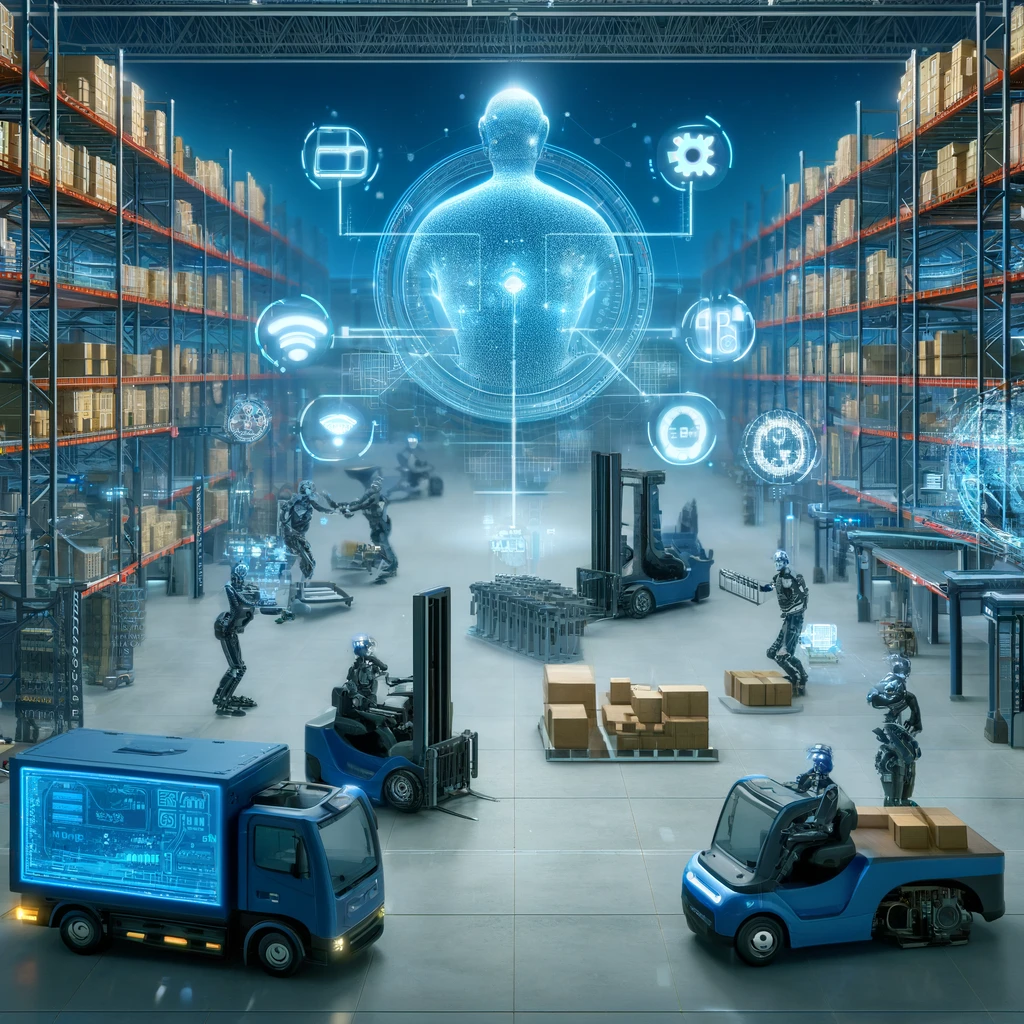Artificial Intelligence in Warehousing
By: A Staff Writer
Updated on: Apr 11, 2024

The warehousing industry is experiencing a rapid transformation driven by the adoption of Artificial Intelligence (AI), the Internet of Things (IoT), and Robotics. As the supply chain becomes more complex, efficient and cost-effective warehousing solutions are paramount. Let us explore the potential of these technologies to revolutionize warehousing and discuss their key benefits and challenges.
Artificial Intelligence in Warehousing
AI enables machines to mimic human cognitive functions like learning, problem-solving, and decision-making. For example, in warehousing, AI can improve efficiency and accuracy.
Applications
Demand forecasting: AI algorithms can analyze historical data and predict future demand, helping warehouses to optimize inventory levels and reduce carrying costs.
Routing optimization: AI can optimize picking routes, minimize travel time, and improve worker productivity.
Warehouse management systems: AI can enhance existing systems, automating tasks such as scheduling, labor management, and order processing.
Internet of Things (IoT) in Warehousing
IoT refers to the interconnection of physical objects embedded with sensors, software, and other data collection and communication technologies. IoT can improve inventory management, asset tracking, and overall operations in warehousing.
Applications
Real-time inventory tracking: IoT sensors and RFID tags can provide real-time information on inventory levels and locations, reducing errors and improving stock control.
Environmental monitoring: Sensors can monitor temperature, humidity, and other factors to ensure optimal conditions for stored goods.
Predictive maintenance: IoT devices can detect potential equipment issues and trigger maintenance alerts before they become critical, reducing downtime and improving overall efficiency.
Robotics in Warehousing
Robotics involves designing, constructing, and operating robots that can perform tasks autonomously or semi-autonomously. For example, in warehousing, robots can assist or replace human labor in various jobs, improving efficiency and reducing costs.
Applications
Automated guided vehicles (AGVs): AGVs can transport materials and products within the warehouse, reducing labor requirements and increasing throughput.
Picking robots: Robots equipped with vision systems and gripping mechanisms can perform picking tasks, increasing speed and reducing errors.
Collaborative robots (cobots): Cobots can work alongside humans, sharing tasks and improving overall productivity.
Benefits and Challenges
Benefits
Cost reduction: AI, IoT, and Robotics can reduce labor costs, energy consumption, and inventory carrying costs.
Improved efficiency: These technologies can optimize processes, increasing productivity and throughput.
Enhanced accuracy: Automation reduces the likelihood of human error, improving inventory management and order fulfillment accuracy.
Challenges
High initial investment: Implementing AI, IoT, and Robotics are capital intensive.
Data security and privacy: The increased connectivity and data generation can create vulnerabilities and privacy concerns.
Workforce disruption: Adopting these technologies may result in job displacement or require workers to acquire new skills.
The integration of Artificial Intelligence, the Internet of Things, and Robotics in warehousing has the potential to revolutionize the industry. These technologies can help businesses adapt to the ever-evolving global supply chain by automating processes, improving efficiency, and reducing costs.